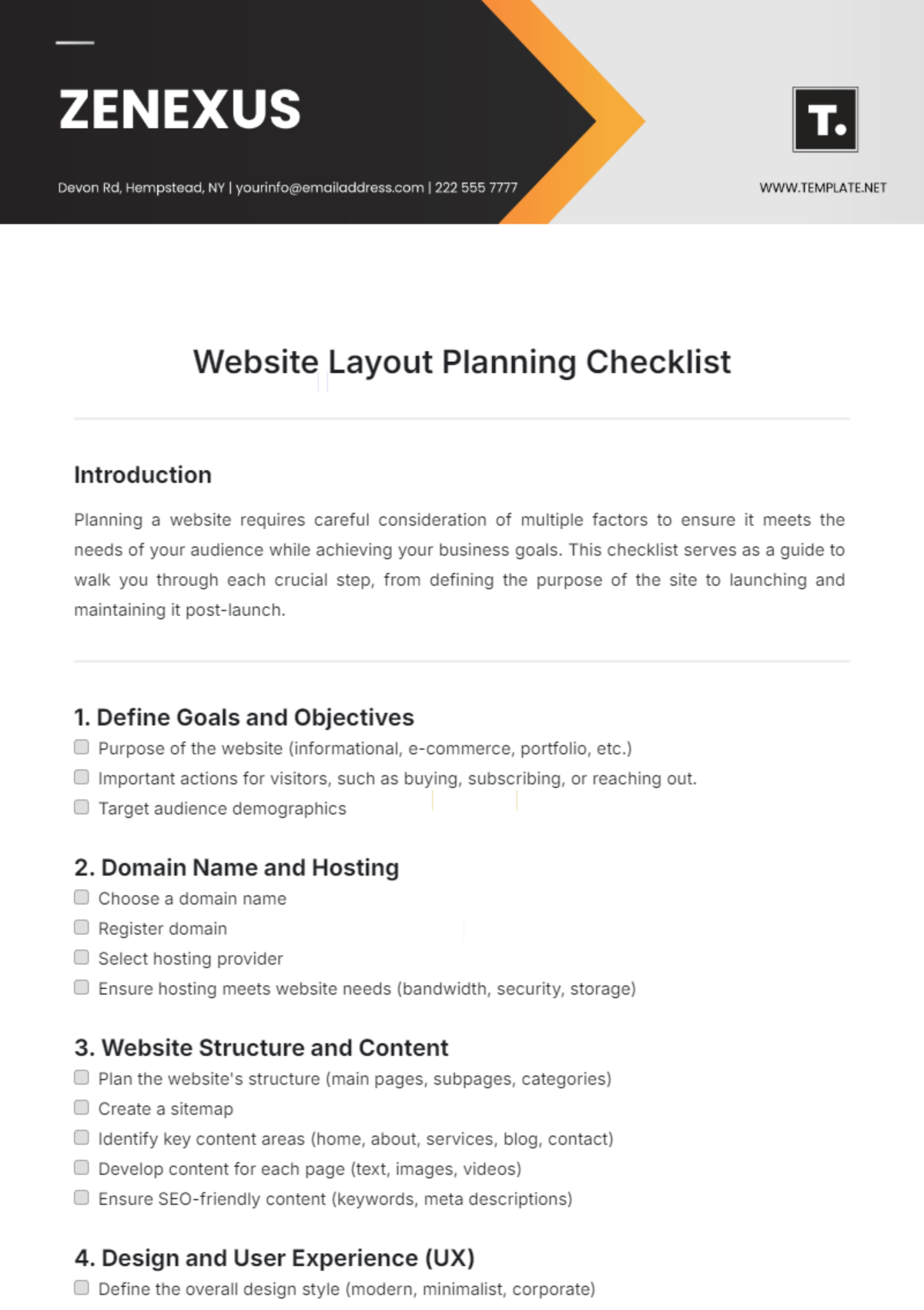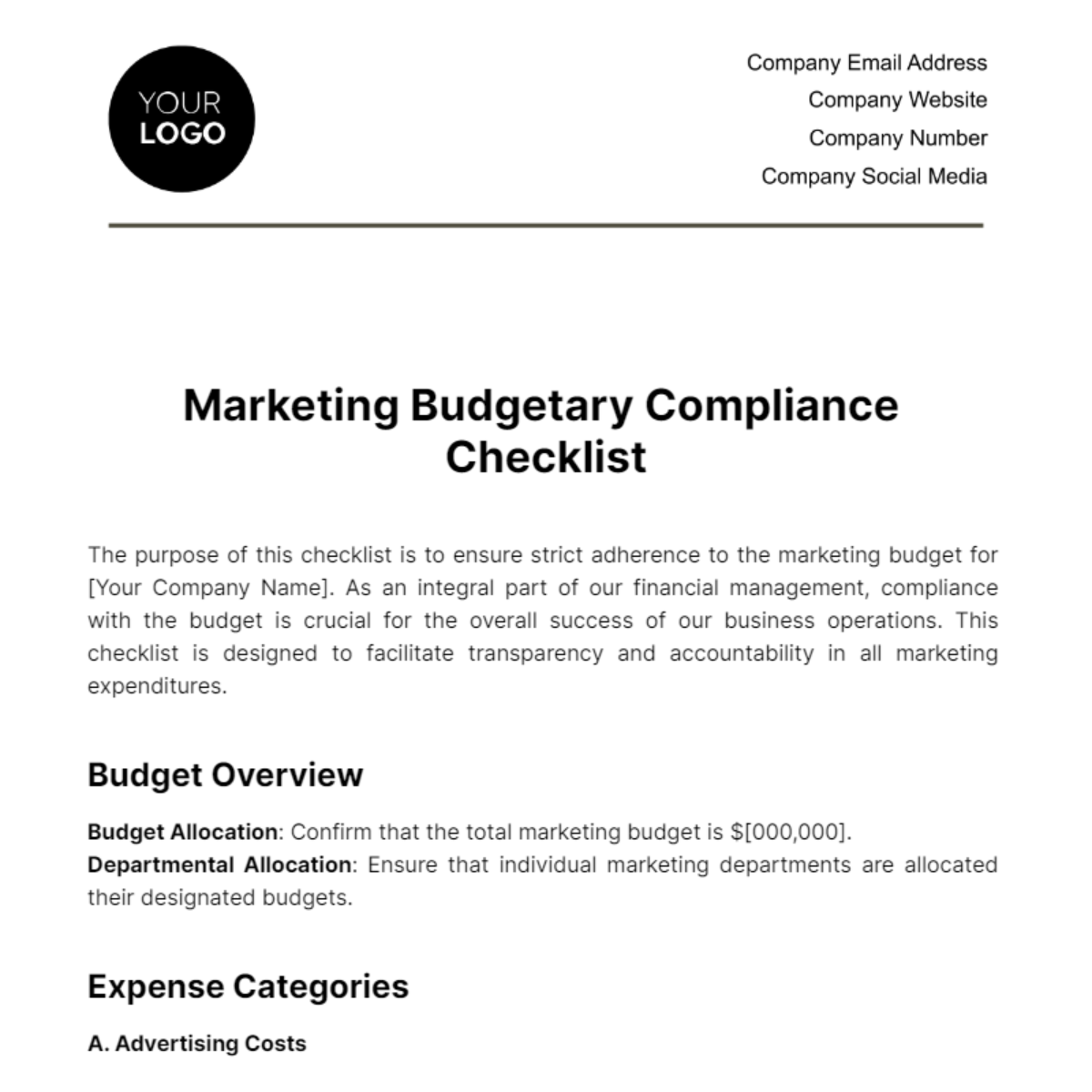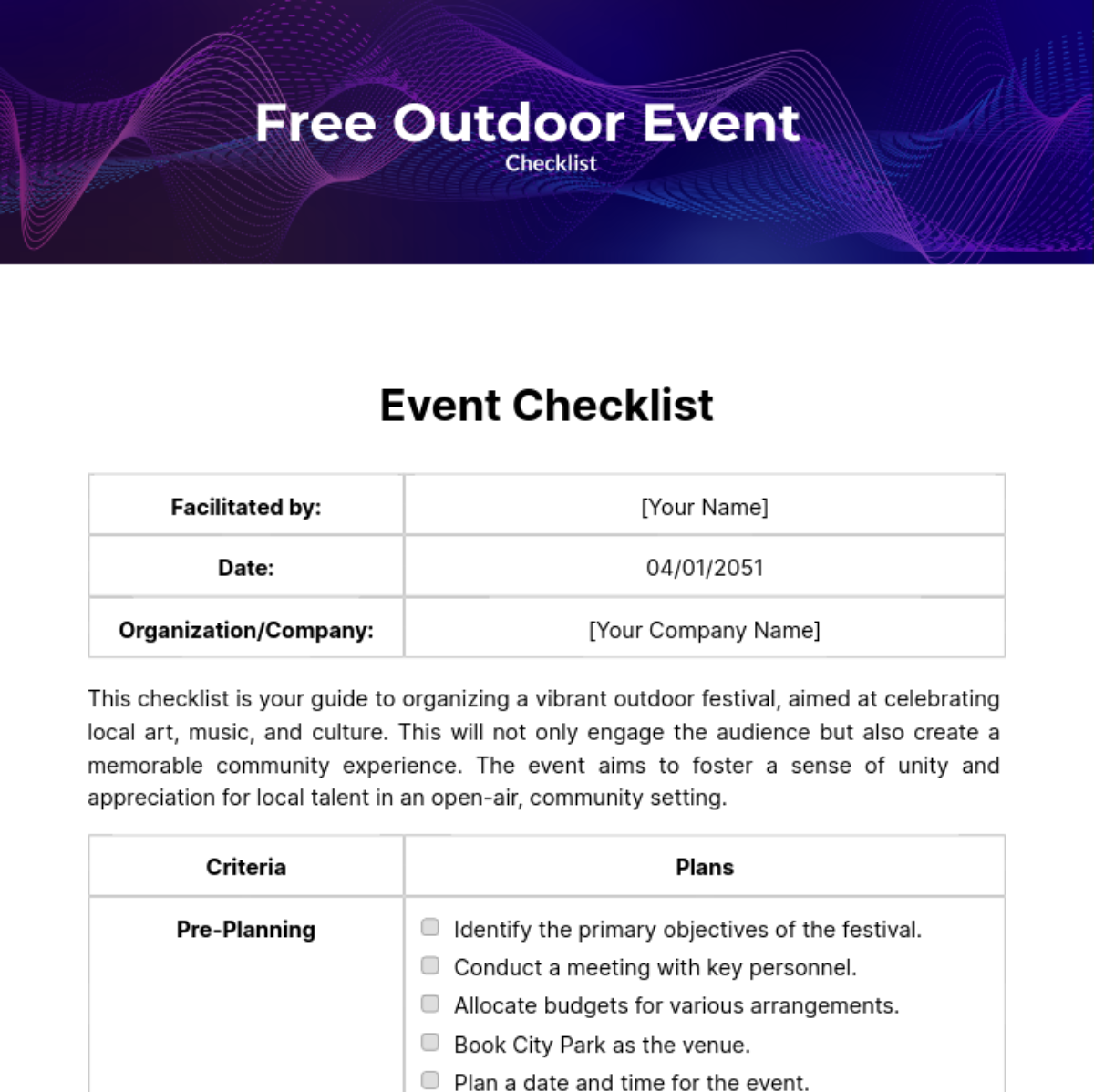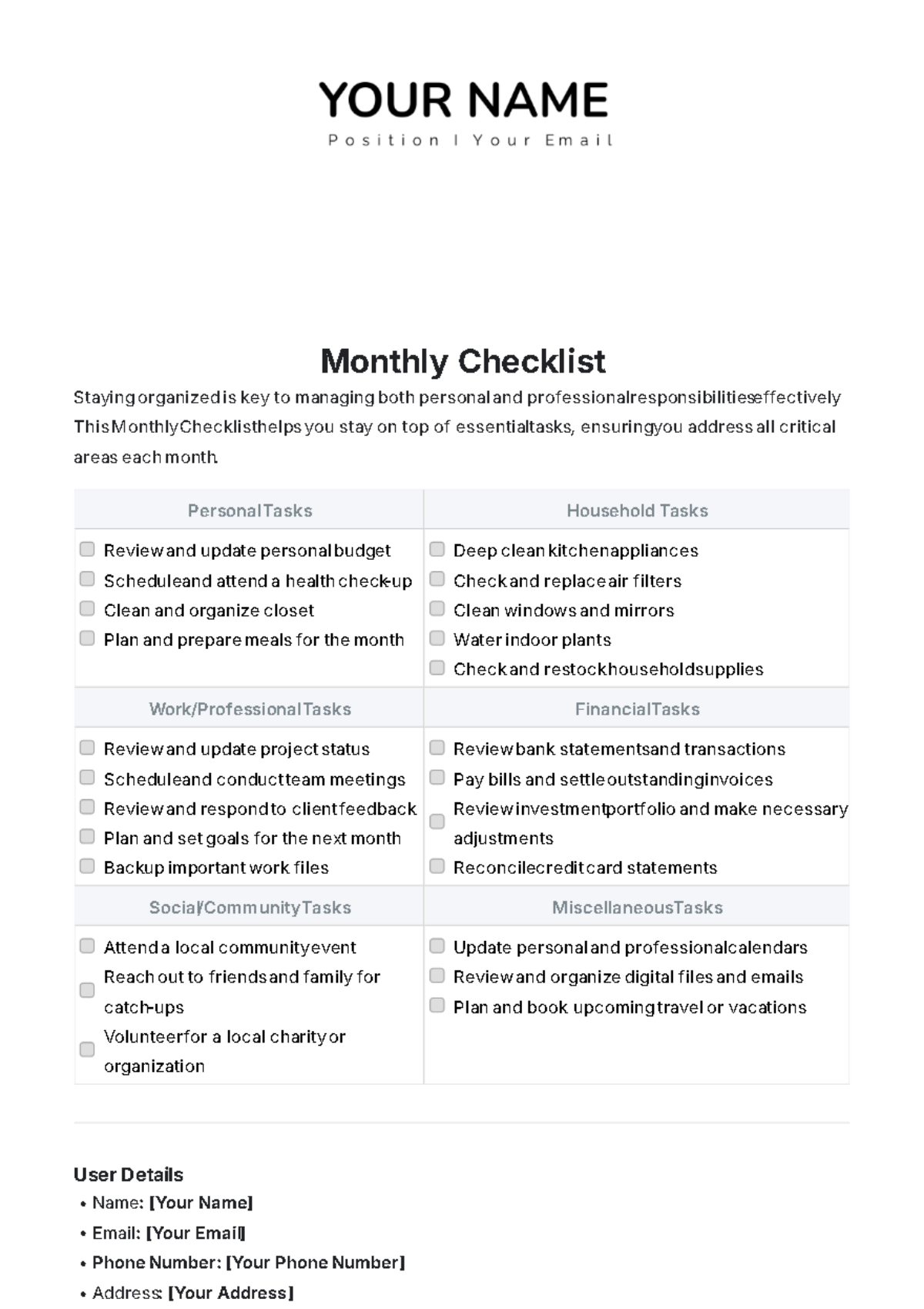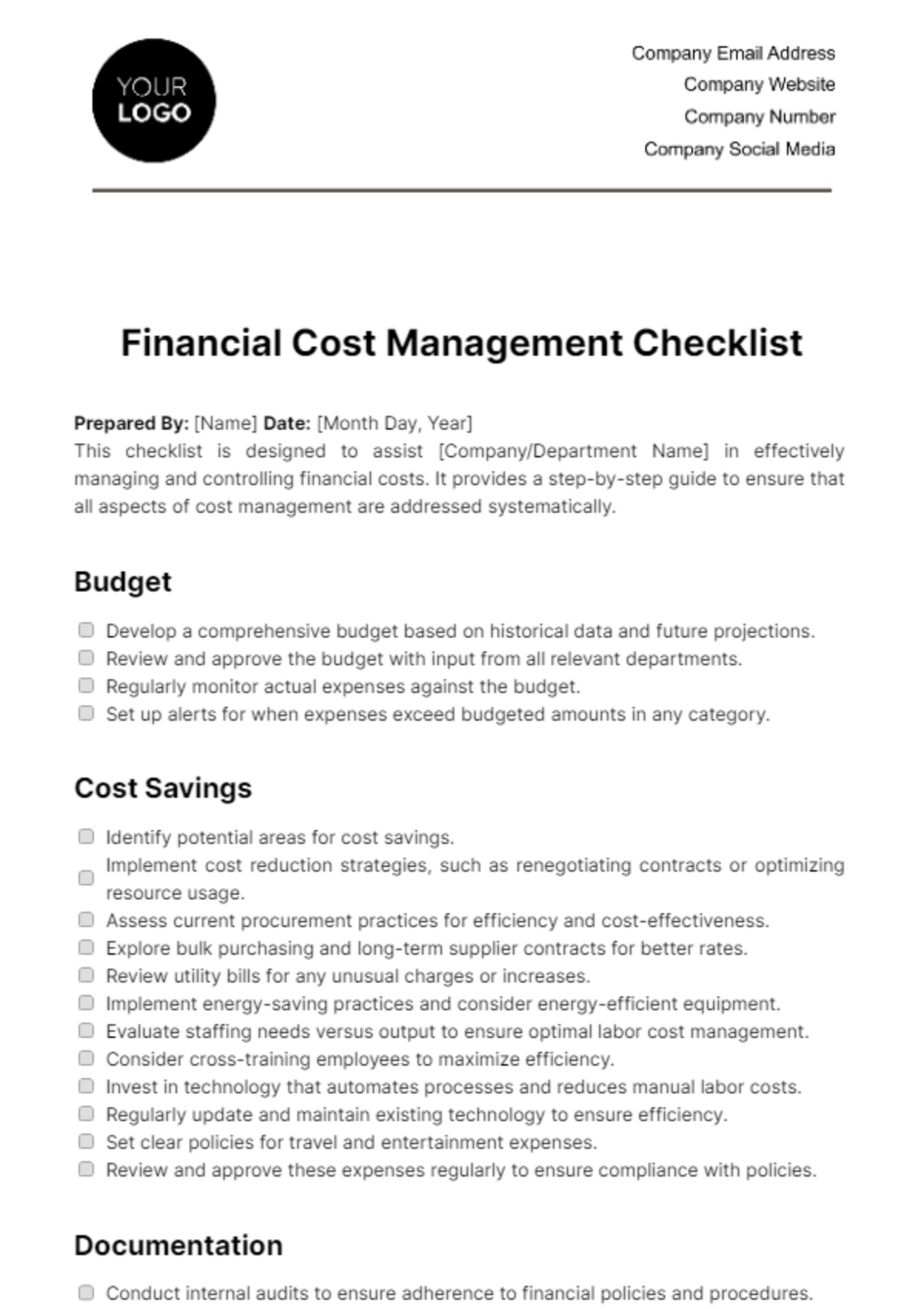Website Layout Planning Checklist
Introduction
Planning a website requires careful consideration of multiple factors to ensure it meets the needs of your audience while achieving your business goals. This checklist serves as a guide to walk you through each crucial step, from defining the purpose of the site to launching and maintaining it post-launch.
1. Define Goals and Objectives
Purpose of the website (informational, e-commerce, portfolio, etc.)
Important actions for visitors, such as buying, subscribing, or reaching out.
Target audience demographics
2. Domain Name and Hosting
Choose a domain name
Register domain
Select hosting provider
Ensure hosting meets website needs (bandwidth, security, storage)
3. Website Structure and Content
Plan the website's structure (main pages, subpages, categories)
Create a sitemap
Identify key content areas (home, about, services, blog, contact)
Develop content for each page (text, images, videos)
Ensure SEO-friendly content (keywords, meta descriptions)
4. Design and User Experience (UX)
Define the overall design style (modern, minimalist, corporate)
Ensure mobile responsiveness
Plan for easy navigation (menus, buttons, internal links)
Focus on user-friendly design (clear CTAs, easy-to-read fonts)
Use consistent branding (colors, fonts, logo)
5. Functionality and Features
Identify key website features like a contact form, chatbots, or e-commerce.
Integrate necessary plugins and tools (SEO tools, analytics, social sharing)
Plan for future scalability (add more pages, blog section)
Ensure functionality across devices and browsers
6. SEO and Analytics
Set up basic SEO (alt text for images, proper headings, meta tags)
Ensure fast loading times
Set up an analytics tool, like Google Analytics, to monitor visitor activity.
Plan for ongoing SEO strategies (content updates, backlinking)
7. Security and Compliance
Install SSL certificate for secure browsing (https)
Plan for privacy policy, terms of service, and cookie policy
Ensure GDPR or other legal compliance if applicable
Implement security plugins to prevent hacking or malware
8. Testing
Test across all browsers (Chrome, Firefox, Safari, etc.)
Check mobile responsiveness on various devices
Test page loading speed
Test all website functionalities (forms, payment gateways, etc.)
9. Launch Plan
Ensure content is proofread and polished
Perform final SEO checks
Plan a launch date and marketing strategy (social media, email campaigns)
Backup website before launch
10. Post-Launch Maintenance
Monitor website performance (load times, broken links)
Plan for regular content updates
Schedule regular security checks and backups
Continuously analyze and optimize for SEO and user experience
